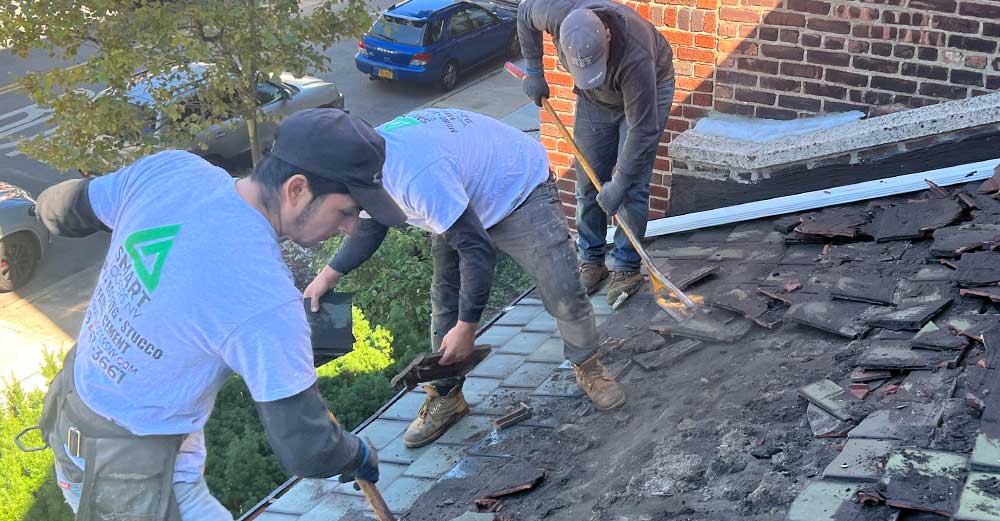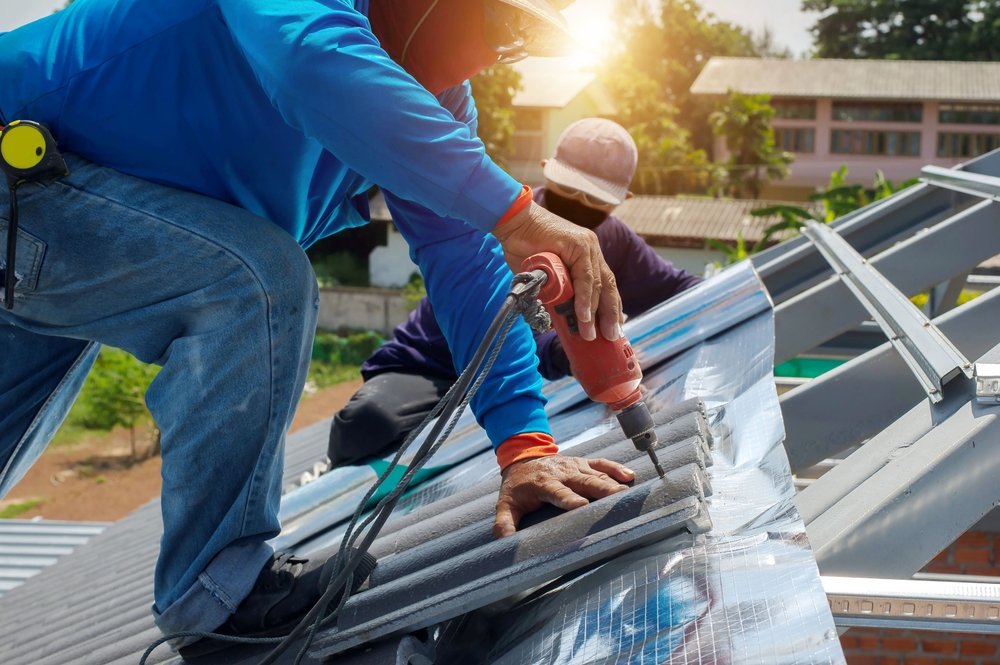Exploring the Various Kinds of Roofs: Which One Is Finest for Your Home?
When considering the myriad types of roof coverings readily available, it is vital to assess how each option aligns with your home's distinct requirements, consisting of environment problems, aesthetic choices, and structural functionality. From the timeless gable roof covering that effectively networks rainwater to the modern-day flat roofing offering city flexibility, each style presents distinctive benefits and obstacles. Furthermore, the choice might substantially affect lasting maintenance and power effectiveness. As you consider the ideal fit for your residence, it is necessary to evaluate these aspects thoroughly, specifically as some choices might stun you with their potential benefits.
Gable Roofs
Saddleback roofs, identified by their triangular shape and sloping sides, are a preferred option amongst property owners seeking both visual allure and capability. This roof style successfully permits reliable water overflow, lowering the risk of water pooling and subsequent damages. In addition, the high slopes produce ample attic room area, which can be used for storage space or even exchanged living areas.
One of the key advantages of gable roofings is their ability to endure rough weather. The layout helps in lessening wind resistance, making them particularly suitable for areas susceptible to tornados. Additionally, saddleback roofs can be built utilizing a selection of products, consisting of roof shingles, ceramic tiles, and steel, offering homeowners with adaptability in style and budget.
From a building perspective, saddleback roofs can improve the visual allure of a home, providing a classic and classic look. They can enhance various architectural styles, from standard to contemporary styles. Nevertheless, it is important to take into consideration prospective drawbacks, such as the sensitivity to snow build-up in cooler environments. On the whole, gable roof coverings remain a favored choice because of their balance of practicality and design, attracting a vast array of property owners.
Apartment Roofs
While often overlooked in support of more standard roof covering styles, level roofing systems provide special benefits that deal with particular architectural requirements and contemporary design choices. These roofings are identified by their marginal pitch, enabling for reliable usage of space, specifically in metropolitan atmospheres where maximizing square video footage is essential.
One significant benefit of flat roofings is their versatility. They can be utilized as added home, such as roof gardens, patio areas, or solar panel setups, enhancing the capability of a home. Additionally, level roofing systems are generally less complicated and more secure to navigate throughout maintenance, facilitating fixings and inspections without the challenges positioned by steep inclines.
Flat roofings can likewise be more cost-effective in terms of materials and setup. With an easier style, they usually call for less resources, equating right into reduced labor prices. Nevertheless, it's important to think about drainage and waterproofing, as level roof coverings can be vulnerable to pooling water otherwise sufficiently created.

Hip Roofs
Hip roofing systems attract attention for their stylish layout and structural honesty, making them a preferred option amongst home owners. Identified by inclines on all four sides, hip roofings offer a well-balanced visual that matches various architectural styles - roof repair oahu. The balanced nature of these roofs aids to disperse weight uniformly, improving security and longevity
One of the vital advantages of hip roofing systems is their capability to hold up against severe climate condition. The sloped surface areas assist in efficient water drain and snow overflow, lowering the danger of leakages and architectural damage. In addition, the layout lessens wind resistance, making hip roofing systems less at risk to wind uplift contrasted to other roof covering types.


Lost Roofings
Dropped roofings, in comparison to the complexity of hip roofing useful reference systems, provide a minimalist and structured style that attract modern-day visual appeals. Characterized by a solitary sloping surface, dropped roof coverings are usually used in contemporary architecture, garden sheds, and various other functional frameworks. This simplicity not just enhances aesthetic appeal yet also permits effective water runoff, making them ideal for different climates.
One of the primary advantages of shed roofs is their cost-effectiveness. With less products called for and a straightforward setup procedure, home owners can conserve both money and time. The layout likewise permits the incorporation of huge home windows or skylights, advertising all-natural light and creating spacious interiors.
Nevertheless, it is necessary to consider the prospective disadvantages, consisting of limited insulation choices and the requirement for careful design to prevent excessive heat build-up. Furthermore, shed roofs may not blend seamlessly with typical design, which might be a worry for some house owners.
Eventually, shed roofings offer a practical and elegant roofing solution for those seeking modernity and efficiency. When choosing a roofing type, reviewing individual useful requirements and aesthetic choices will certainly lead homeowners to the very best option for their unique demands.
Mansard Roofings
Mansard roof coverings, characterized by their distinct four-sided layout, are a characteristic of French style that incorporates style with performance. This building design includes 2 slopes on each side, with the lower slope being steeper than the upper one. The special setup permits additional living room in the top levels, making it a suitable option for home owners looking for to maximize usable location without expanding the building's footprint.
Among the substantial advantages of a mansard roof is its convenience. It can be adapted to numerous building styles, from typical to modern, enhancing the visual charm of any type of home. Additionally, the adequate room produced anchor under the roofing can easily suit dormer home windows, which enable all-natural light and air flow, more improving the convenience of the living area.
Nonetheless, potential property owners must take into consideration the maintenance demands connected with mansard roof coverings. Installment prices may be higher contrasted to simpler roofing designs due to the complexity of building and construction.
Verdict
Finally, the choice of an appropriate roofing type depends upon private requirements, climate considerations, and aesthetic choices. Each roof style presents one-of-a-kind advantages, such as the efficiency of gable roofs, the modern appeal of shed roofing systems, and the security of hip roofings. Moreover, level roofs provide functionality for city atmospheres, while mansard roofs give additional living room despite greater installment expenses. Eventually, an extensive examination of these elements will certainly lead home owners in making a notified decision.
From the classic gable roof covering that successfully networks rain to the modern flat roof covering offering urban flexibility, each style provides unique benefits and obstacles (roof repair oahu). In addition, the design decreases wind resistance, making check my source hip roofs much less at risk to wind uplift compared to other roof types
Shed roofs, in contrast to the intricacy of hip roof coverings, supply a minimalist and structured style that charms to modern visual appeals. Each roof style provides distinct advantages, such as the effectiveness of gable roof coverings, the modern charm of shed roofs, and the stability of hip roofing systems. Flat roofs offer practicality for metropolitan settings, while mansard roofing systems supply additional living room in spite of greater installment costs.